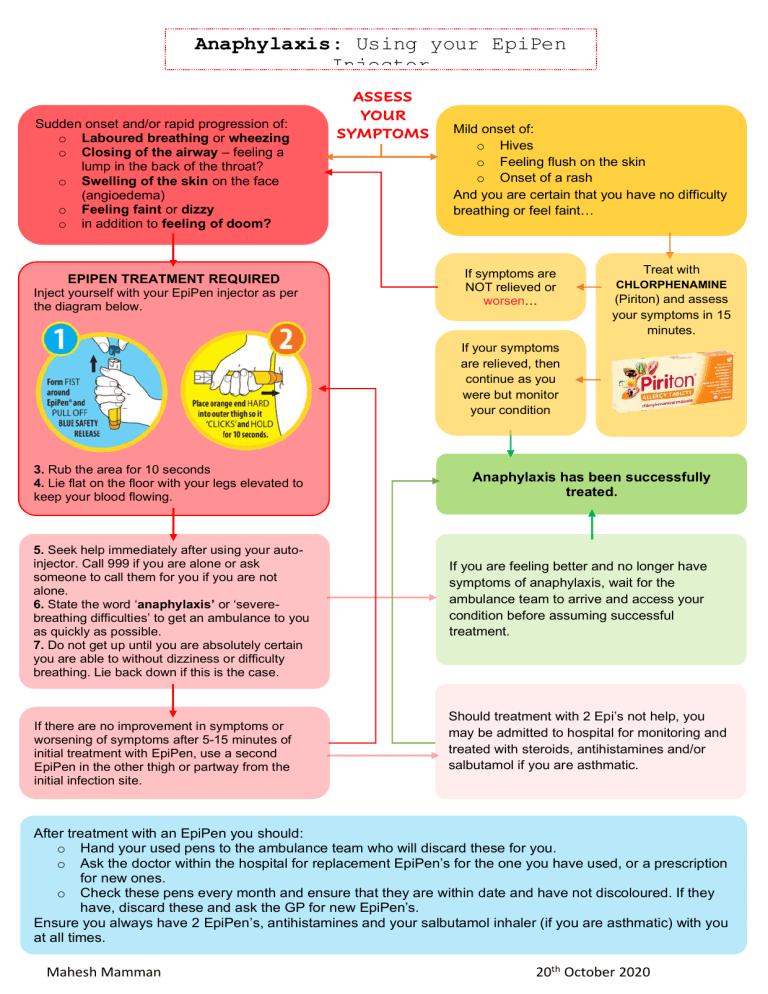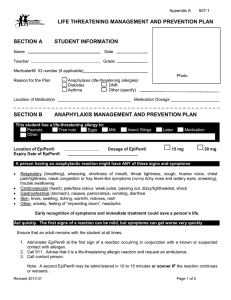
Anaphylaxis: Using your EpiPen Injector Sudden onset and/or rapid progression of: o Laboured breathing or wheezing o Closing of the airway – feeling a lump in the back of the throat? o Swelling of the skin on the face (angioedema) o Feeling faint or dizzy o in addition to feeling of doom? EPIPEN TREATMENT REQUIRED Inject yourself with your EpiPen injector as per the diagram below. ASSESS YOUR SYMPTOMS Mild onset of: o Hives o Feeling flush on the skin o Onset of a rash And you are certain that you have no difficulty breathing or feel faint… If symptoms are NOT relieved or worsen… Treat with CHLORPHENAMINE (Piriton) and assess your symptoms in 15 minutes. If your symptoms are relieved, then continue as you were but monitor your condition 3. Rub the area for 10 seconds 4. Lie flat on the floor with your legs elevated to keep your blood flowing. 5. Seek help immediately after using your autoinjector. Call 999 if you are alone or ask someone to call them for you if you are not alone. 6. State the word ‘anaphylaxis’ or ‘severebreathing difficulties’ to get an ambulance to you as quickly as possible. 7. Do not get up until you are absolutely certain you are able to without dizziness or difficulty breathing. Lie back down if this is the case. If there are no improvement in symptoms or worsening of symptoms after 5-15 minutes of initial treatment with EpiPen, use a second EpiPen in the other thigh or partway from the initial infection site. Anaphylaxis has been successfully treated. If you are feeling better and no longer have symptoms of anaphylaxis, wait for the ambulance team to arrive and access your condition before assuming successful treatment. Should treatment with 2 Epi’s not help, you may be admitted to hospital for monitoring and treated with steroids, antihistamines and/or salbutamol if you are asthmatic. After treatment with an EpiPen you should: o Hand your used pens to the ambulance team who will discard these for you. o Ask the doctor within the hospital for replacement EpiPen’s for the one you have used, or a prescription for new ones. o Check these pens every month and ensure that they are within date and have not discoloured. If they have, discard these and ask the GP for new EpiPen’s. Ensure you always have 2 EpiPen’s, antihistamines and your salbutamol inhaler (if you are asthmatic) with you at all times. Mahesh Mamman 20th October 2020







